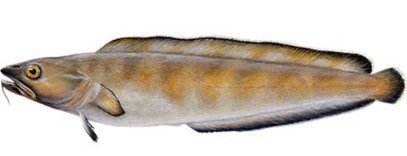

Cusk is safe for dogs but should not be served in excessive amounts due to potential contaminants such as chlorinated pesticides and heavy metals that can build up in their bodies over time. Eating cusk can provide dogs with an assortment of nutrients, such as protein, potassium, iron, and vitamin A, which are all essential for their health and overall well-being.
Cusk is a good source of protein, which is essential for cell and muscle development and repair in dogs. Additionally, cusk also contains potassium, iron, and vitamin A, all of which are important nutrients to regulate bodily functions.
Though safe for dogs in moderation, cusk may contain contaminants such as dioxins, chlorinated pesticides, and heavy metals, as they often reside on the bottom of bodies of water where the cusk feed. Furthermore, cusk bones are a choking hazard and can cause blockages and gastrointestinal injuries if swallowed.
Prior to serving, the cusk should be thoroughly washed and cleaned. Refrain from seasoning the fish and offer it to your dog as an occasional treat rather than a regular part of their diet.
Cusk, also known as lumpsucker or torsk, is a small, bottom-feeding fish and is eaten by humans in different parts of the world. It is especially popular in regions such as Scandinavian countries, Northern Europe, and Northern America. While some dog owners introduce cusk to their pet’s diet, it is important to be aware of its benefits and risks.
Benefits of cusk for dogs include a source of proteins for cell and muscle development, as well as essential nutrients such as potassium, iron, and vitamin A to regulate bodily functions. Though safe for consumption, it’s important to note that cusk may contain contaminants, and the bones could be a choking hazard. Washing and cleaning thoroughly prior to offering it and refraining from seasoning is advised. Serve it as an occasional snack rather than a regular part of the diet.
Alternatively, you could offer healthy foods like cooked eggs, lean meats, vegetables, and certain grains as part of your pet’s diet. You could also let your dog indulge in healthy treats like unsalted and unsweetened peanut or almond butter.
Have you ever served your dog cusk? Have you ever found any contaminants on your cusk? While cusk can provide vital nutrients and proteins, moderating its consumption and monitoring the catch can go a long way to ensure your pet’s safety. We’d love to hear your stories!
Welcoming your furry family into the discussion, we hope you and your beloved pet get to enjoy a healthy and balanced diet together!